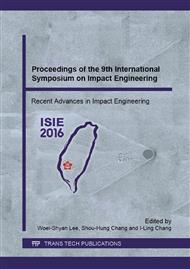p.3
p.13
p.23
p.27
p.33
p.39
p.43
p.48
Analysis of Shell Material Influence on Detonation Process in High Explosive Charge
Abstract:
The influence of the shell material (copper and silicon carbide) on the detonation process in cylindrical high explosive charge is experimentally and numerically investigated. We observed the significant differences of wave pictures in the detonation products and in the shells, which were due to differences in the sound velocities in the shells and rapid destruction of the ceramic shell under explosion loading. The specific features of a wave picture at the interface HE/ceramics due to desensitization of explosive under loading by an advanced wave in the shell were detected. Those features lead to decreasing of detonation pressure, blurring of the detonation front, and to increasing of mass velocity behind detonation front that is typical for under-compressed detonation. On the symmetry axis of HE charge in the ceramic shell behind the detonation front the long zone with practically constant pressure was observed. We have identified the mechanism of transmission of disturbances from the periphery to the symmetry axis of the HE charge. The source of the emergence of this zone is identified as transverse waves propagating directly behind the detonation front from the periphery to the symmetry axis of the HE charge.
Info:
Periodical:
Pages:
27-32
Citation:
Online since:
September 2016
Price:
Сopyright:
© 2016 Trans Tech Publications Ltd. All Rights Reserved
Share:
Citation:


